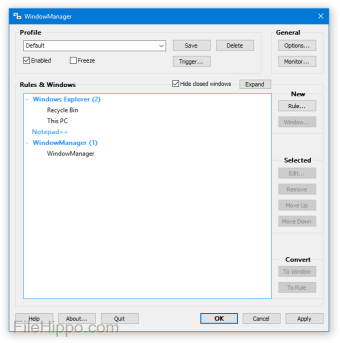


Test APIs for setting up fake ActivityEmbedding values are now stable.Test APIs for creating a FoldingFeature is now stable.Expose experimental window APIs for accessing the rear screen.Version 1.2.0-beta01 contains these commits. You can add your vote to an existing issue byįor more information. In this library before you create a new one. Let us know if you discover new issues or have Implementation("androidx.window:window-testing:1.0.0") Implementation("androidx.window:window-rxjava3:1.0.0") Implementation("androidx.window:window-rxjava2:1.0.0") Implementation("androidx.window:window-java:1.0.0") Implementation("androidx.window:window:1.0.0") Implementation "androidx.window:window-testing:1.0.0" Implementation "androidx.window:window-rxjava3:1.0.0" Implementation "androidx.window:window-rxjava2:1.0.0" Implementation "androidx.window:window-java:1.0.0" For Java-friendly APIs to register and unregister callbacks Hope this is helpful.Implementation "androidx.window:window:1.0.0" A routing device can be a firewall, router or Layer 3 switch. Network addresses cannot be changed without co-ordination with a public network provider (ISP)Īccessing public network from a private network requires the use of NAT ( Network Address Translation) which modifies the private IP packet headers when they transit from private to a public network across a routing device that will perform the NAT translation to the public network.Permanently issued to customers by IANA.Temporarily issued to customers by ISP's.Communicates to other private LAN's and hosts.Used within a 'private' local network space.Does not require issuance by IANA ( Internet Assigned Number Authority).Private IP Ranges specified by RFC 1918.Private IP ranges are NOT allocated to any particular organization A private network can use both IPv4 and IPv6 addresses. You can use any private IP address range within your private network. There is enough for everyone, if we are not too lavish.) (And after all, with IPv6 nobody should have the need to use otherwise allocated IP space for their own networks. So, is it feasible? Yes, if you can restrict your Internet usage to some services that can be proxied by internal servers. But forget any services that need NAT traversal or direct connections.

routable) IP addresses to work, but this is not a big problem to achieve with an appropriate infrastructure (DMZs and some firewalls). Those proxies and servers of course need contact to the Internet with "official" (i.e. But how could you do that when you still want to reach Gmail or Twitter? Well, in many company networks, external Internet access is limited anyway: You can use e-mail with the internal mail server and have Web access over a proxy server. Second, I personally know a very large organization that uses the complete IPv4 unicast address space internally. So, those addresses are "safe to use" within your own network. Whatever external address the service on has, it cannot be an RFC 1918 address because those are not routed on the Internet. First, you should use RFC 1918 addresses in your internal network because none of those addresses will be associated with a service on the Internet.


 0 kommentar(er)
0 kommentar(er)
